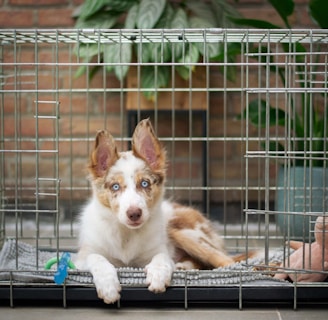10 Valuable Tips for Crate Training Your Rottweiler Puppy
11/19/20232 min read


10 Tips for Crate Training Rottweiler Puppies
Crate training is an essential aspect of raising a well-behaved and happy Rottweiler puppy. Properly introducing your Rottweiler to a crate can provide a safe and secure space for them, aiding in various aspects of their development. Here are ten valuable tips to make crate training a positive experience for both you and your Rottweiler puppy.
1. Start Early and Gradually:
Begin crate training as early as possible. Introduce the crate gradually, allowing your Rottweiler to explore it at their own pace. Make the crate a comfortable and inviting space by placing familiar bedding and toys inside.
2. Positive Association:
Associate the crate with positive experiences. Use treats and praise when your Rottweiler willingly enters the crate. This helps create a positive association with the crate as a safe and rewarding space.
3. Short Intervals Initially:
Keep the initial crate sessions short. Start with just a few minutes and gradually extend the time as your Rottweiler becomes more comfortable. This prevents them from associating the crate with long periods of confinement.
4. Consistent Schedule:
Establish a consistent schedule for crate time. This routine helps your Rottweiler understand when it's time to enter the crate, promoting a sense of security and predictability.
5. Ignore Whining Appropriately:
Expect some resistance initially, including whining. However, avoid letting your Rottweiler out of the crate while they're whining. Wait for a moment of quiet before opening the door to reinforce that quiet behavior is rewarded.
6. Interactive Toys:
Provide interactive toys to keep your Rottweiler entertained in the crate. Puzzle toys or toys stuffed with treats can be excellent distractions and make crate time more enjoyable.
7. Comfort and Safety:
Ensure the crate is appropriately sized for your growing Rottweiler. It should be large enough for them to stand, turn around, and lie down comfortably. This helps create a sense of security and prevents accidents in the crate.
8. Use Commands Consistently:
Introduce specific commands for entering and exiting the crate, such as "crate" and "release." Consistency in commands helps your Rottweiler understand expectations and facilitates training.
9. Gradual Alone Time:
Gradually increase the time your Rottweiler spends alone in the crate. This helps them develop independence and prevents separation anxiety. Combine crate time with other positive experiences, like feeding and playtime.
10. Regular Bathroom Breaks:
kotlinCopy code
Ensure your Rottweiler gets regular bathroom breaks. Puppies have limited bladder control, so taking them out for a bathroom break before and after crate time is crucial for their comfort.
By following these tips, you'll establish a positive crate training experience for your Rottweiler puppy, fostering good behavior and a strong bond between you and your furry friend.
Feel free to explore more about Rottweiler puppy care and training on our website:
For additional resources on crate training and puppy care, check out these external links: